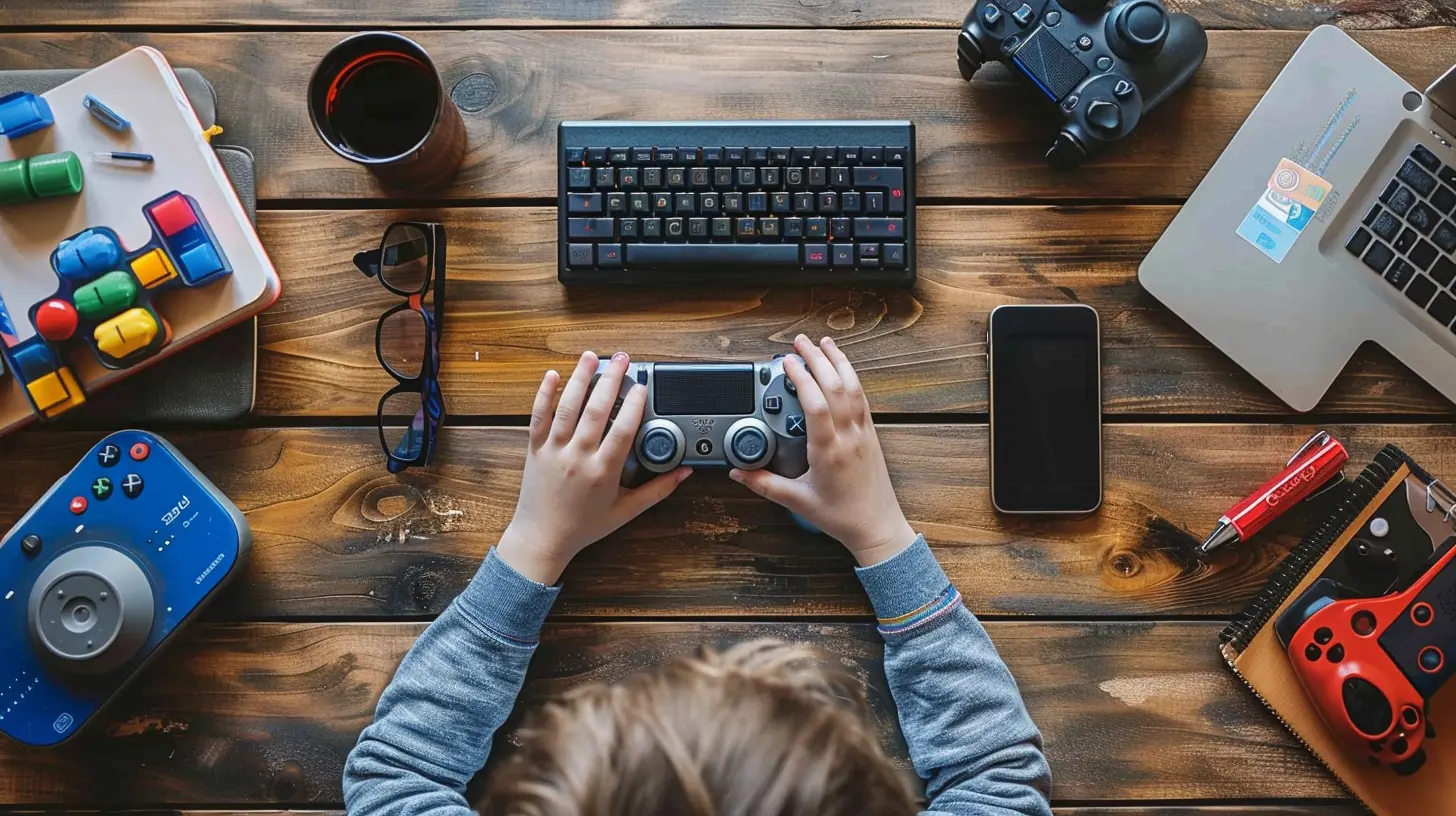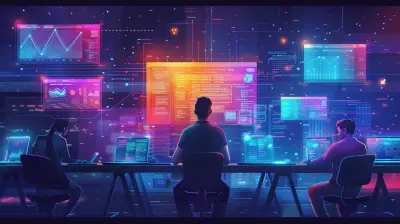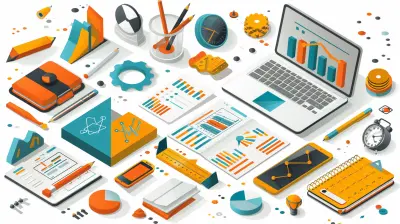23 November 2024
Online education has become the go-to method for learning in recent years, especially with the rise of technological advancements and the need for flexible, accessible learning environments. But while online education offers convenience, it can sometimes feel impersonal or even monotonous. This is where gamification comes in, breathing new life into the online classroom by making learning more engaging, interactive, and, dare I say, fun.
Gamification is not just about making things playful—it's about using game-like elements to motivate students, reward progress, and keep them coming back for more. Let’s dive deep into the role of gamification in online education and explore how it’s changing the game (pun intended) for students and educators alike.

What Is Gamification in Education?
Before we go any further, let's break down what gamification actually means in the context of education.Gamification refers to the incorporation of game elements—such as points, badges, leaderboards, and rewards—into non-game contexts. In online education, this could mean adding quizzes with scoring systems, creating achievement badges for completing modules, or even incorporating interactive simulations that mimic real-world challenges.
In essence, gamification turns the learning process into something that feels more like a game than a traditional, often rigid, educational experience. It’s not about turning every lesson into a full-blown video game but rather about integrating elements that make learning more engaging, motivating, and rewarding.

Why Is Gamification So Effective in Online Learning?
You might be wondering: "Why does gamification work so well in online education?" Well, the answer lies in basic human psychology.1. Motivation and Engagement
At its core, gamification taps into the power of intrinsic and extrinsic motivation. Think about it—why do people spend hours playing video games? It’s because they’re motivated by achieving goals, leveling up, and earning rewards. The same principles apply to learning.When students see their progress in tangible terms (such as points or badges), they feel a sense of accomplishment. This not only motivates them to keep going but also makes the learning process more enjoyable.
2. Instant Feedback
One of the biggest challenges in traditional education is the delay in feedback. Imagine taking a test and waiting days or even weeks to find out how you did. With gamification, feedback is often instant, allowing students to see how well they’re doing in real time. This instant feedback loop helps students identify areas where they need improvement and adjust their approach on the fly.3. Sense of Achievement
Game mechanics like leveling up or earning badges provide students with a clear sense of achievement. It's like ticking off items on a to-do list—there’s a certain satisfaction in knowing you've completed something. For students, these achievements can boost self-confidence and create a sense of progress, even when the subject matter is challenging.4. Fostering Healthy Competition
Gamification often incorporates leaderboards or competitive scoring systems, which introduces a healthy dose of competition. Now, competition isn't everyone's cup of tea, but for many students, it can be a huge motivator. Seeing how they stack up against their peers can drive them to push harder and strive for better results.5. Improved Retention
When students are engaged and motivated, they tend to retain information better. Gamification encourages active learning, where students are not just passively consuming information but actively participating in the process. Whether it’s through interactive quizzes, simulations, or challenges, students are more likely to remember what they’ve learned when they’re having fun doing it.
Gamification Elements That Work Well in Online Education
Not all game-like elements are created equal. Some strategies work better than others when it comes to keeping students engaged and improving learning outcomes. Let’s break down some key gamification elements that have proven to be effective in online education.1. Points and Scoring Systems
Points are the foundation of most gamified experiences. They give students a clear measure of their progress and provide immediate feedback. Whether it’s earning points for completing assignments or participating in discussions, a scoring system can turn mundane tasks into exciting challenges.2. Badges and Rewards
Badges are like virtual gold stars for students. They’re given out when a student completes a specific task or reaches a particular milestone, and they serve as a visual representation of the student’s achievements. Rewards like badges tap into our love for recognition and validation, making students feel like they’ve earned something for their hard work.3. Leaderboards
Leaderboards introduce an element of competition by showing students how they rank compared to their peers. While not everyone is motivated by competition, leaderboards can be incredibly effective for some students. They can also foster a sense of community, as students can see who is excelling and potentially reach out for help or collaboration.4. Quests and Challenges
Quests or challenges are essentially assignments or tasks that students need to complete. However, framing them as quests makes them feel more like adventures rather than just another homework assignment. This can make even the most complex topics feel accessible and engaging.5. Leveling Up
The concept of "leveling up" is borrowed straight from video games, where players increase their level as they gain experience. In online education, this could mean moving from beginner to intermediate to advanced topics as students complete coursework. The idea of advancing to the next level is inherently motivating, as it gives students a clear sense of progression.
Real-World Examples of Gamification in Online Education
You might be thinking, "This all sounds great, but how does gamification actually play out in real-world online education platforms?" Let’s take a look at a few examples of how gamification is currently being used to enhance online learning.1. Duolingo
Duolingo is one of the most well-known examples of gamification in education. It’s a language-learning platform that uses a variety of game-like features to keep users engaged. From earning points for completing lessons to unlocking new levels and earning badges for streaks, Duolingo turns learning a new language into a game.2. Kahoot!
Kahoot! is a game-based learning platform that allows educators to create interactive quizzes and games for their students. Students can participate in these quizzes in real-time, competing against their classmates for the top spot on the leaderboard. It’s an excellent example of how gamification can make even traditional quizzes more engaging and exciting.3. Classcraft
Classcraft is a gamified classroom management tool that turns learning into an epic adventure. Students create avatars and earn points by completing assignments and participating in class activities. They can also collaborate with classmates to tackle challenges, creating a sense of teamwork and camaraderie.The Benefits of Gamification for Different Types of Learners
One of the best things about gamification is that it can benefit a wide variety of learners, regardless of their learning style.1. Visual Learners
Visual learners tend to benefit from the use of badges, progress bars, and charts that show their achievements. The visual representation of progress keeps them motivated and engaged.2. Kinesthetic Learners
Kinesthetic learners, who learn best by doing, can benefit from interactive challenges and simulations. These activities require active participation, making learning more hands-on and less theoretical.3. Auditory Learners
Auditory learners can benefit from gamified features that incorporate sound, such as feedback sounds for correct or incorrect answers. Additionally, gamified storytelling elements can help auditory learners retain information better.4. Competitive Learners
For students who thrive on competition, elements like leaderboards and challenges can serve as powerful motivators. The desire to outperform their peers can push them to engage more deeply with the material.Potential Challenges of Gamification in Online Education
While gamification has many benefits, it’s not without its challenges. It’s important to acknowledge these potential roadblocks to ensure that gamification is implemented effectively.1. Overemphasis on Competition
For some students, the competitive aspect of gamification can be overwhelming or demotivating. Not everyone thrives in a competitive environment, and it’s important for educators to strike a balance between healthy competition and collaboration.2. Lack of Personalization
Not all students are motivated by the same things. What works for one student might not work for another. This means that educators need to be mindful of offering different types of rewards and challenges to cater to a variety of learning styles and preferences.3. Risk of Superficial Learning
There’s a risk that students may focus more on earning points or badges rather than truly understanding the material. It’s crucial that gamification is designed in a way that promotes deep learning and critical thinking, rather than just surface-level engagement.The Future of Gamification in Education
As technology continues to evolve, so too will the use of gamification in education. We can expect to see even more innovative ways to incorporate game-like elements into online learning, from immersive virtual reality experiences to AI-driven personalized learning paths.The future of gamification in education is bright, and it holds the potential to make learning more accessible, engaging, and effective for students of all ages and backgrounds.
Conclusion
Gamification is not just a buzzword—it’s a powerful tool that has the potential to revolutionize the world of online education. By tapping into the natural human desire for achievement, competition, and reward, gamification makes learning more engaging and effective. Whether it's through points, badges, leaderboards, or quests, gamification is helping students stay motivated and invested in their education.As we move further into the digital age, it’s likely that gamification will continue to play a key role in shaping the future of education. So, whether you’re a student looking to level up your learning or an educator seeking new ways to engage your students, gamification is a strategy worth exploring.












Emmett Hines
Gamification in online education transforms learning into an engaging adventure! By incorporating game elements, we can boost motivation, enhance retention, and foster a sense of community. Embrace the power of play to unlock potential and create a vibrant learning experience that inspires and empowers every student. Let's level up education!
February 11, 2025 at 1:27 PM